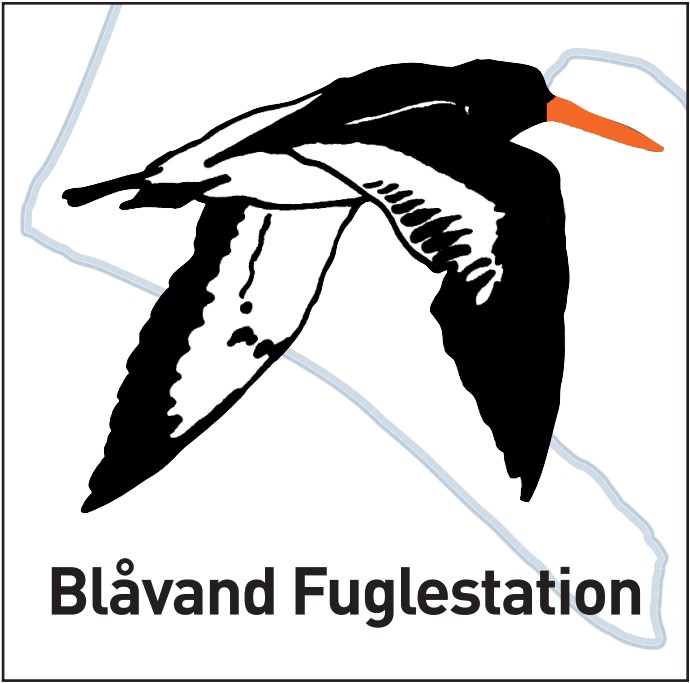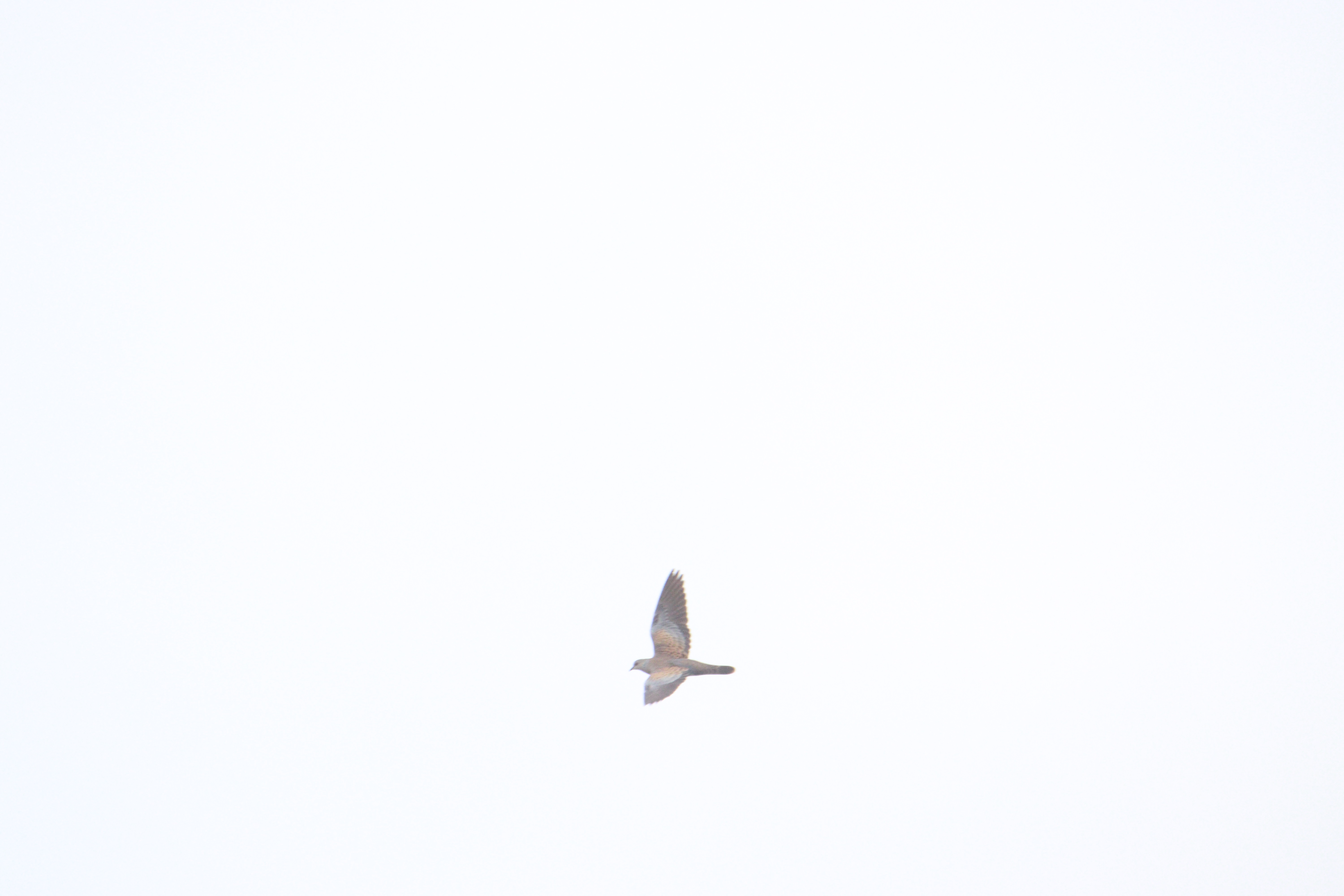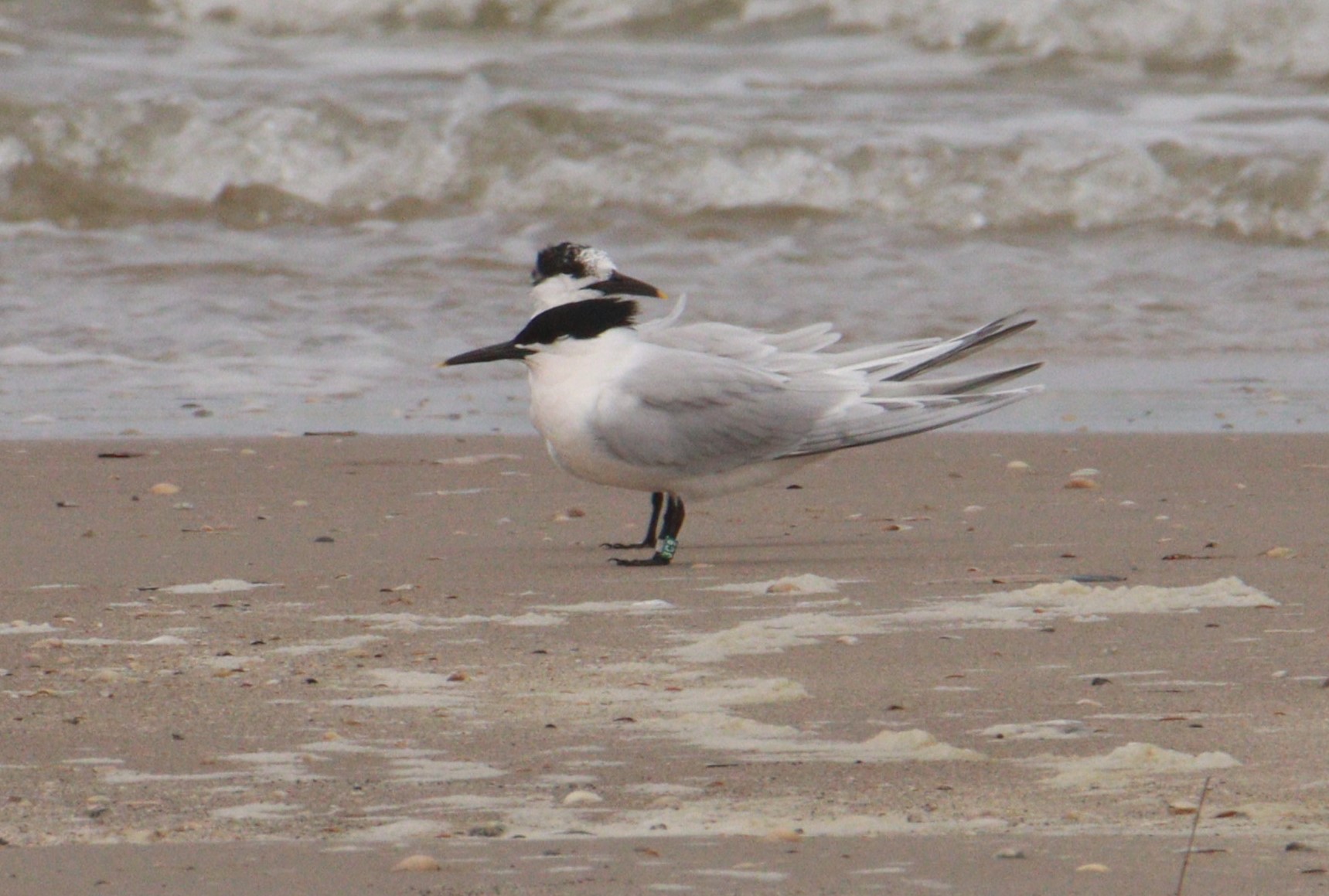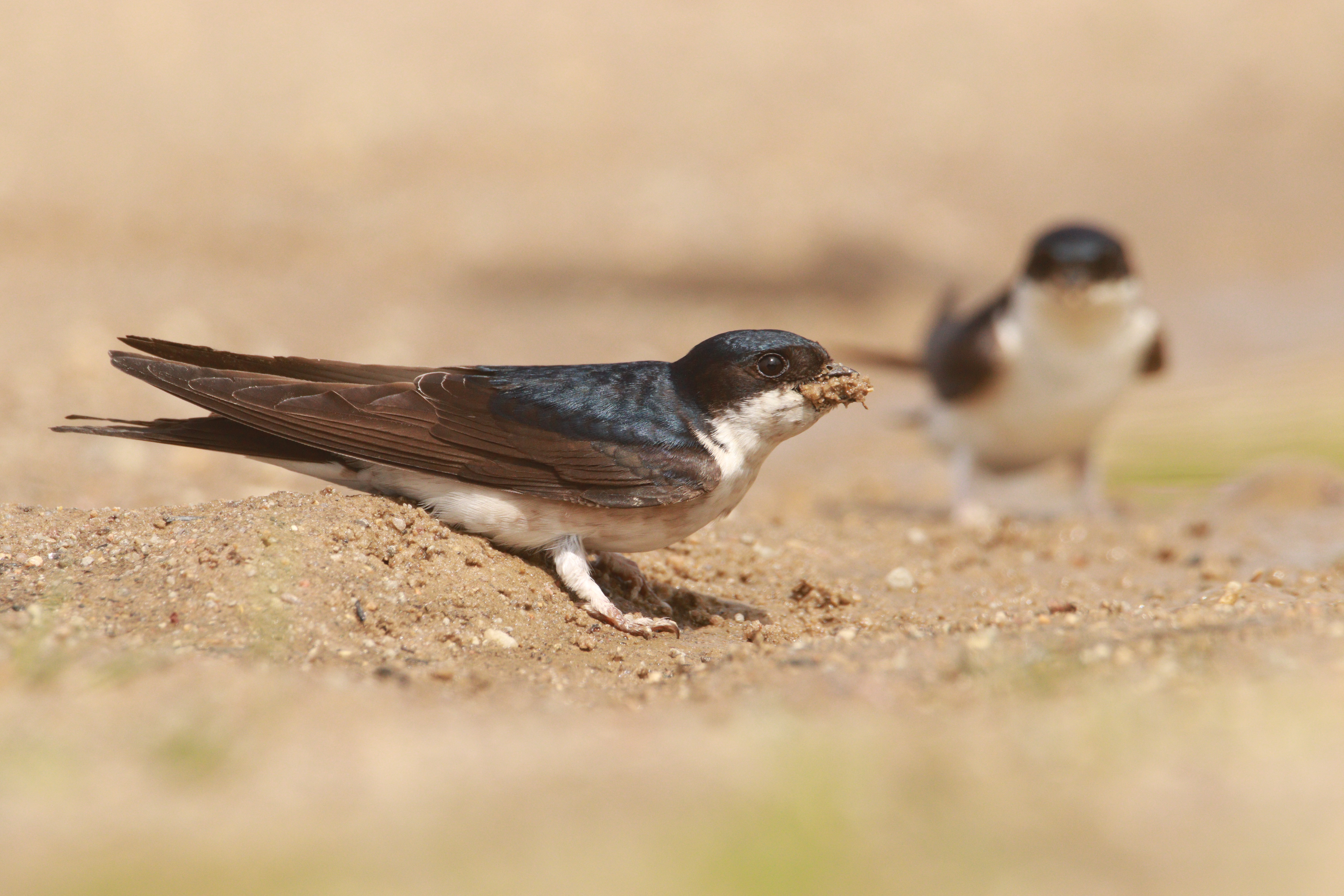Her på Blåvand's blog bringes korte nyheder i dagbogsformat om livet og hændelser på fuglestationen.
Se indlæg fra måned: feb. (4)mar. (31)apr. (30)maj (30)juni (15)juli (19)aug. (21)sept. (30)okt. (31)nov. (30)dec. (2)
An exciting night saves a boring day
Last night I went out pretty late, or early, depends on your perspective of course. I went to sleep early and woke up around 23:45, to go out and catch some birds with the thermal vieuwer, a torch and a carp net, hoping to catch more than 1 bird, and maybe something like a wader. I have done this before, but ony for 1 hour. I didn't chose this night randomly, I checked the weather and it turned out to be a horrible day for opening the nets today with a lot of rain and to much wind.
I was looking for birds and in the first hour, I missed a song thrush and a skylark, but then I saw a bigger white dot moving around. At first I thought it was a rabbit or young hare, but it was moving weird for that. It turned out to be a grey partridge! I walked towards it and it came walking to me as well. As I was shaking, the bird stopped, looked around and was just standing there. I walked a little bit closer and landed the net on the ground. Missed! I was screaming inside and was hoping if I would return later, it would be around again. But 2 minutes later, I saw it walking around again 100 meters from the spot I missed it. I walked towards it again with the light, and it started walking towards me again, I just stood still, and waited for it to stand in front of me again. The same situation occured as the first time, the only difference was, I didn't make a mistake this time! I dropped the net and got it. Amazing catch!
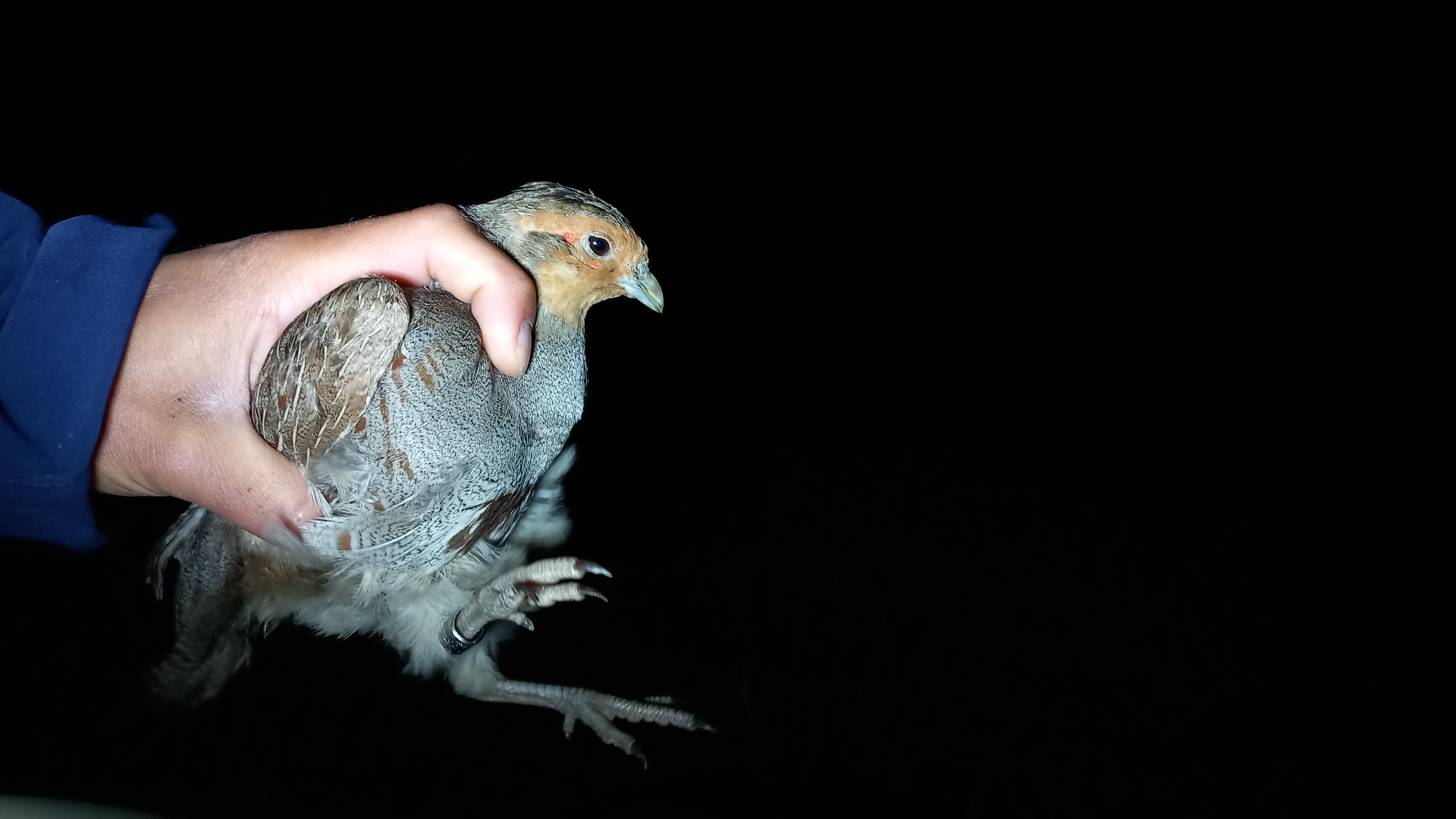
While I saw the partridge, i saw another bird in the same area as well. I checked, and it was still there. It turned out to be a wheatear, which I caught and ringed as I had the partridge in a bag for a minute. It was a 2k male, always a nice bird to catch. At the end of the night I also had a new skylark. As I was ringing it I heard a waterrail calling, which was unreachable, and a bluethroat singing, but when I tried catching it, it flew off to quick, it was probably to light already.
The rest of the day was boring, as it was raining almost all day and too windy, also when it stopped raining. So, I prepared for another night out with taking some rest...
More Young Birds in the Nets
With much calmer weather conditions the nets opened this morning during standard time. Just before the 5 hours were over rain started to pour down and so the nets were closed. In total 9 bird were ringed and 5 recaptured. With practically no more migrating birds in the nets Michael and I are very happy that the newly hatched birds in the area are starting to fly out of the nests and into the nets. The past two weeks or so have been filled with rounds of empty nets, but today in most rounds atleast one bird turned up in the nets. Of the ringed birds 5 were juveniles: 2 Blackbirds, Song Thrush, Green finch and Lesser whitethroat.
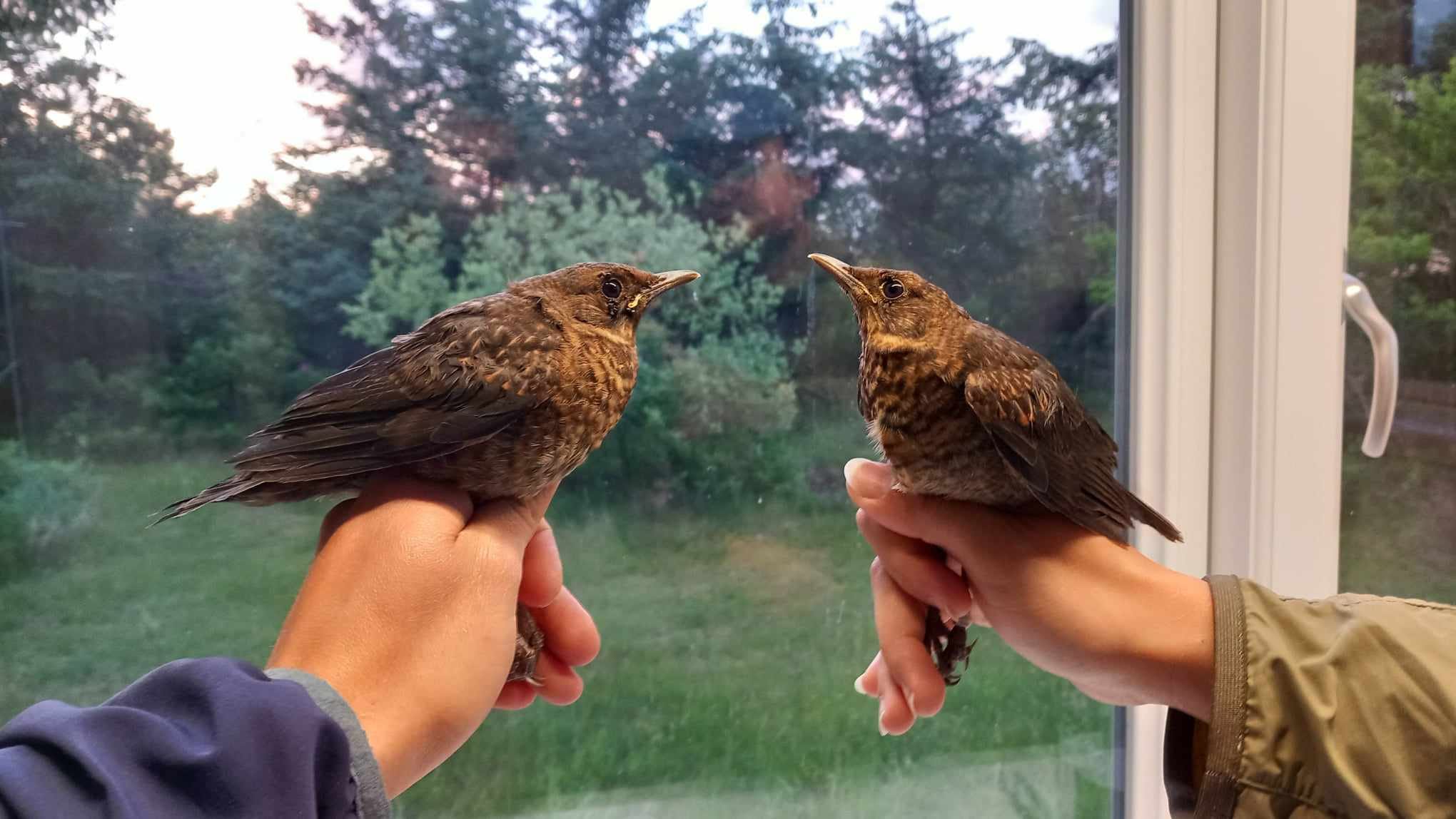
Two juvenile Blackbirds that were ringed together.
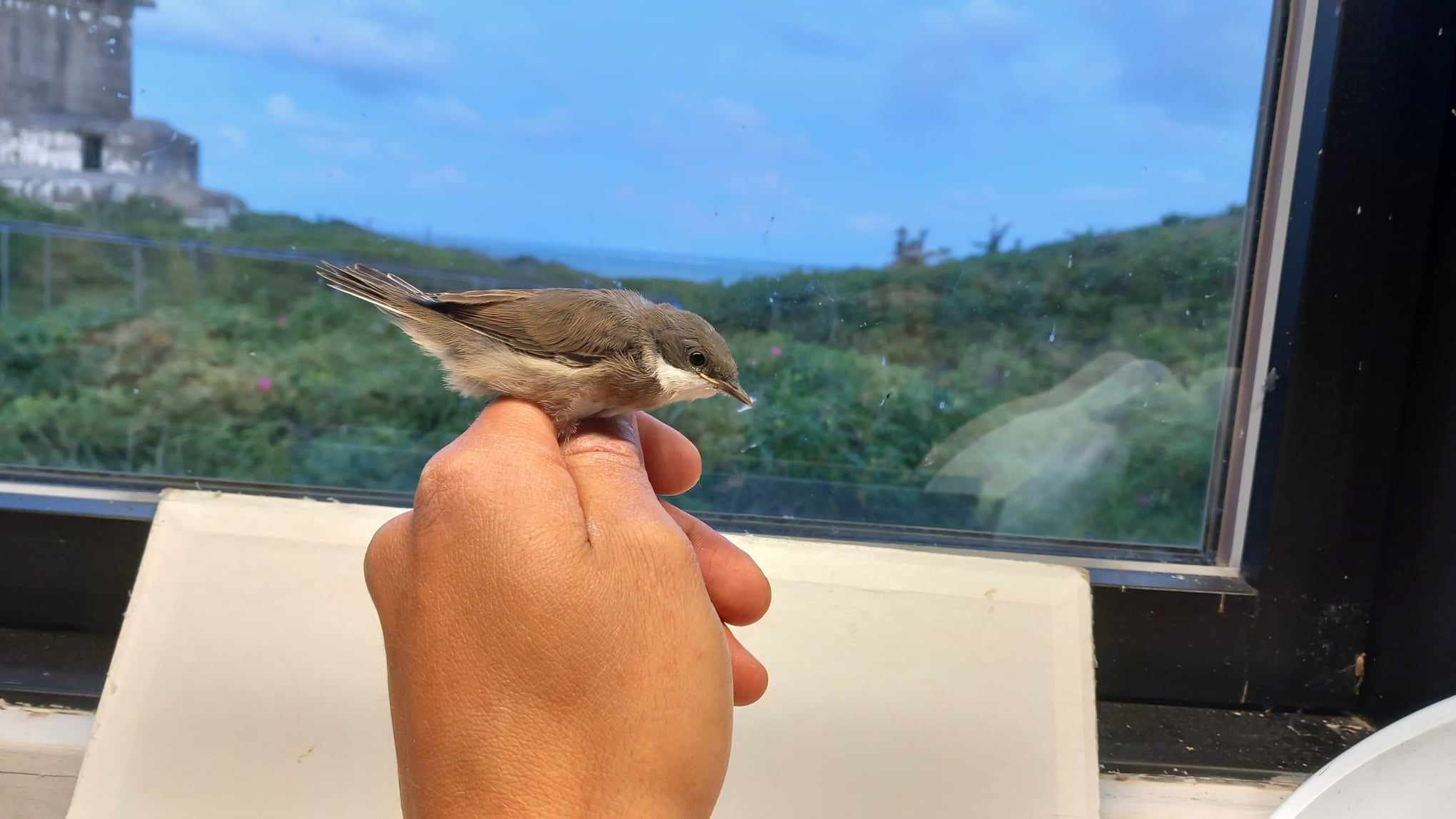
The first juvenile Lesser whitethroat of the season if I am not mistaken.
The rest of the day the weather was quite precarious which did not give us much chance to go outside to enjoy ourselves. It seems uncertain what the upcoming days have in store for us. For now there are strong winds predicted and there is possibility for rain in the morning.
People at the station: Michael and Maxim
Succes with the little terns
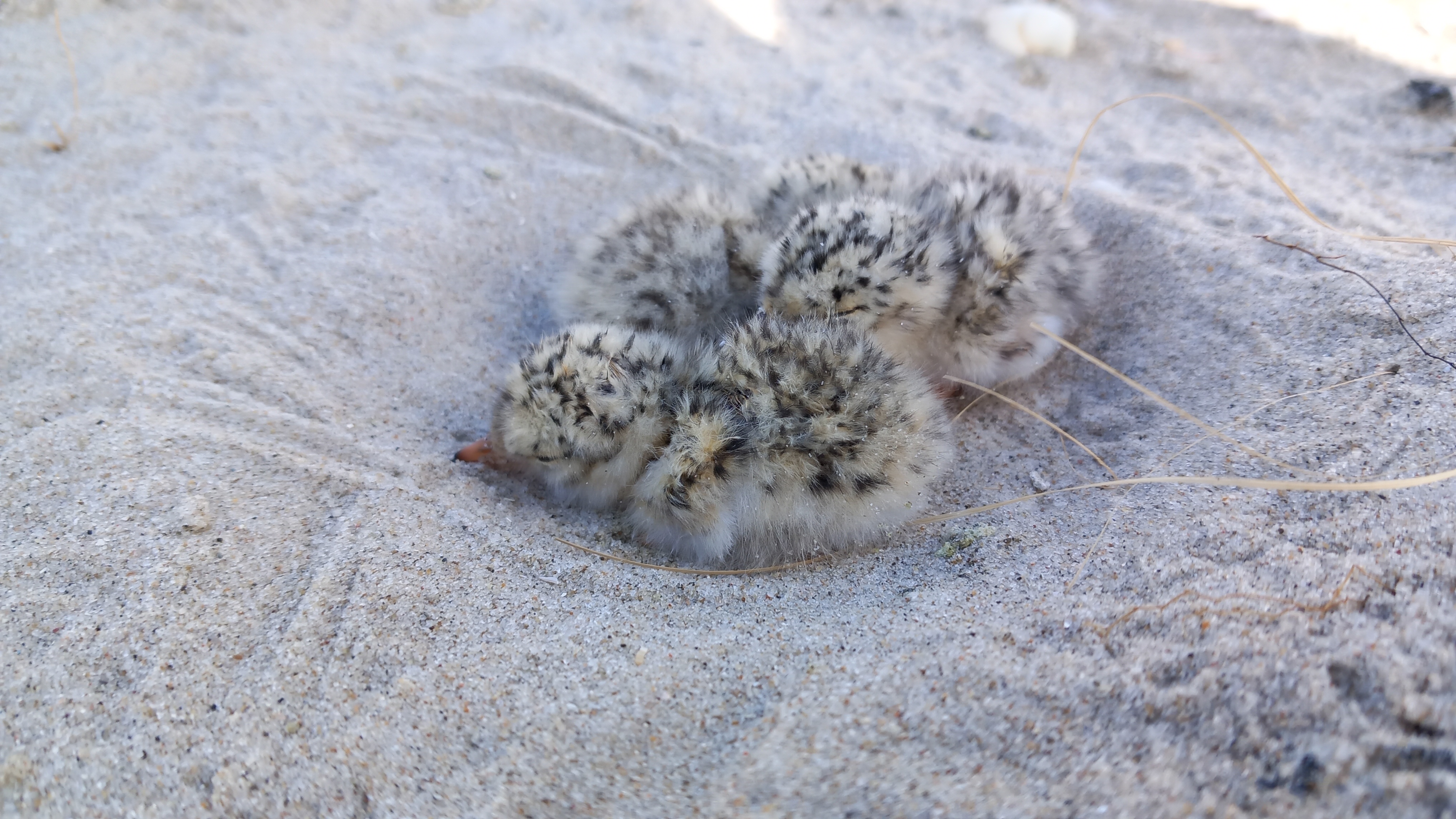
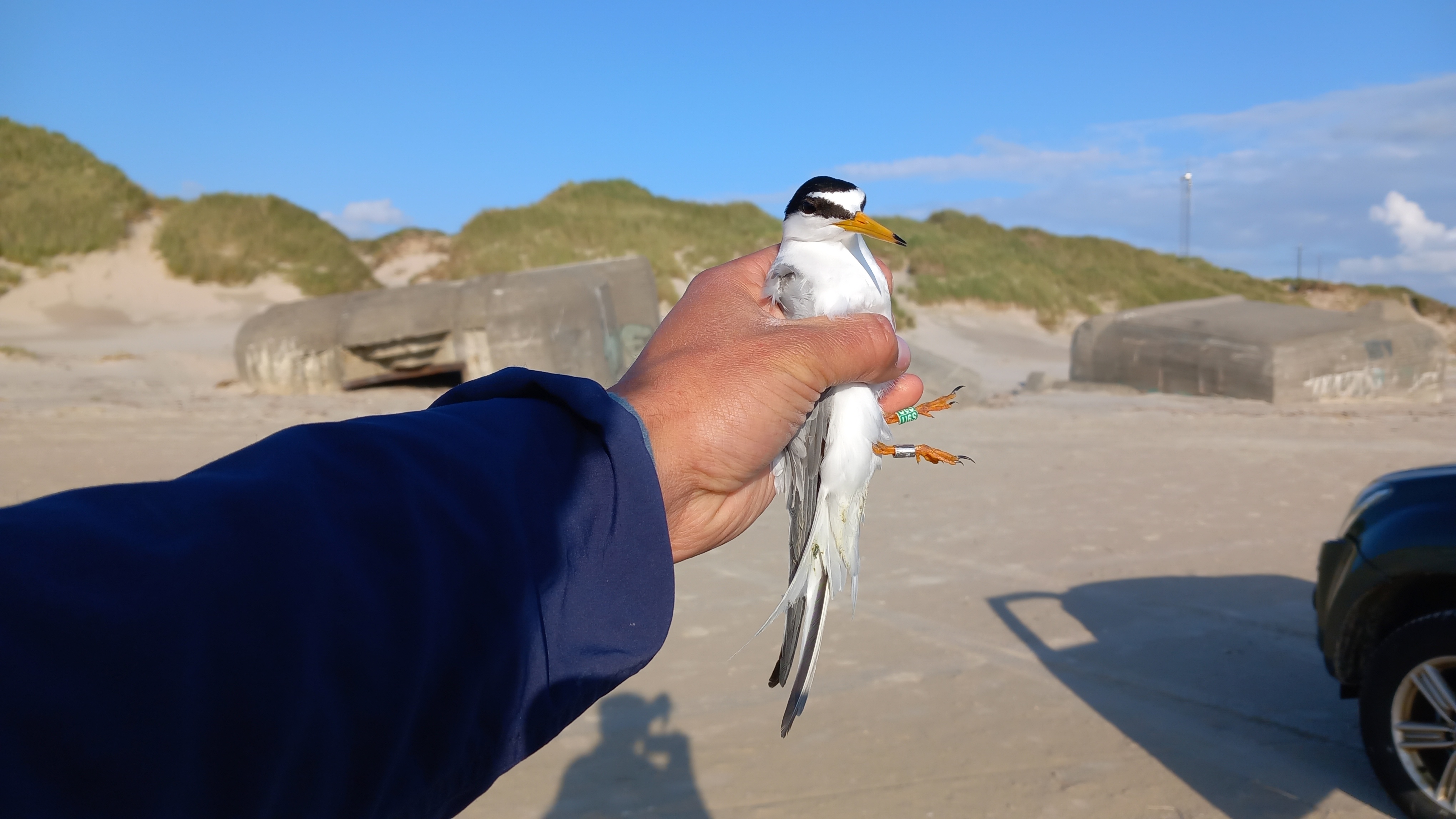
Another Day of Strong Winds
This morning, we probably had the strongest winds of the season, with gusts of winds as high as 22 m/s. Naturally this meant we were not able to open the mist nets today. Instead of walking the rounds in the gardens I went for a walk in the dunes and on my way back to the station I checked on the fenced off breading area of the Little terns. Part of the fence did not withstand the high tides and the strong winds of late. With a little afford and some time I hoisted the fence back up. In the process of fixing the fence I learned that the electrical current that goes through the fence, protecting the breading birds from predators, works just fine. The rest of the day was quite uneventful. Michael and I lazed around the station and I did some work on my project.
The weather predictions for tomorrow say that there will be some rain early in the morning and a westerly wind of 9 m/s. It remains to be seen if we will be able to open the nets.
People at the station: Michael and Maxim
the youngs take the lead
This morning Maxim and I opened the nets at the standerd time and for a change, we caught some birds. in total we caught 2 controls and 7 new birds. One of the controls was a 1k blackbird from last week and 4 of the new birds where young tree sparrows, of which one we caught with a spring trap.
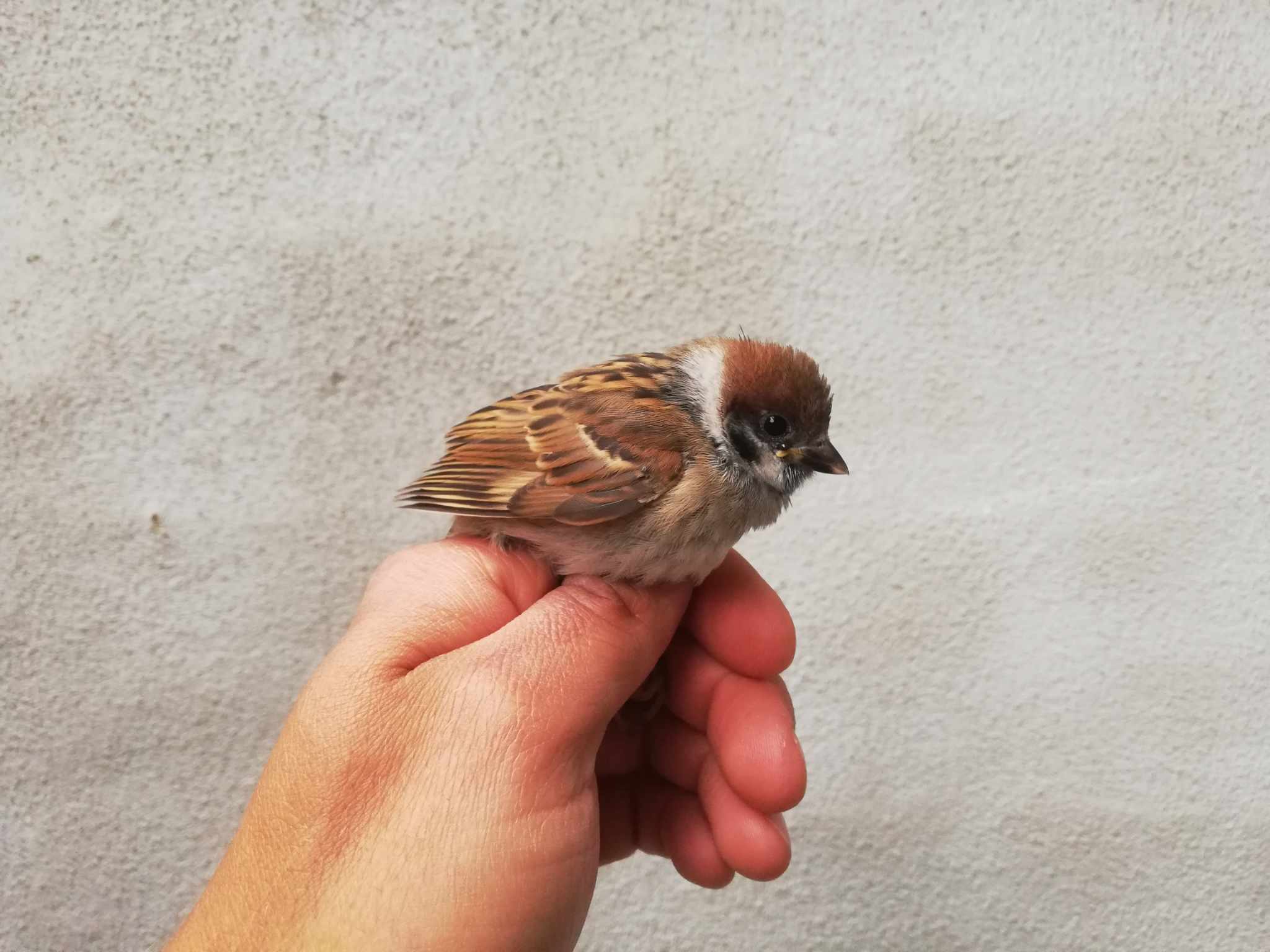
After ringing I went to the beach to see if there where any new ringed plovers to ring. I came across the first young little terns of the season in the enclosure. I also ringed 2 young ringed plovers in a walk of about 2 km over the beach.
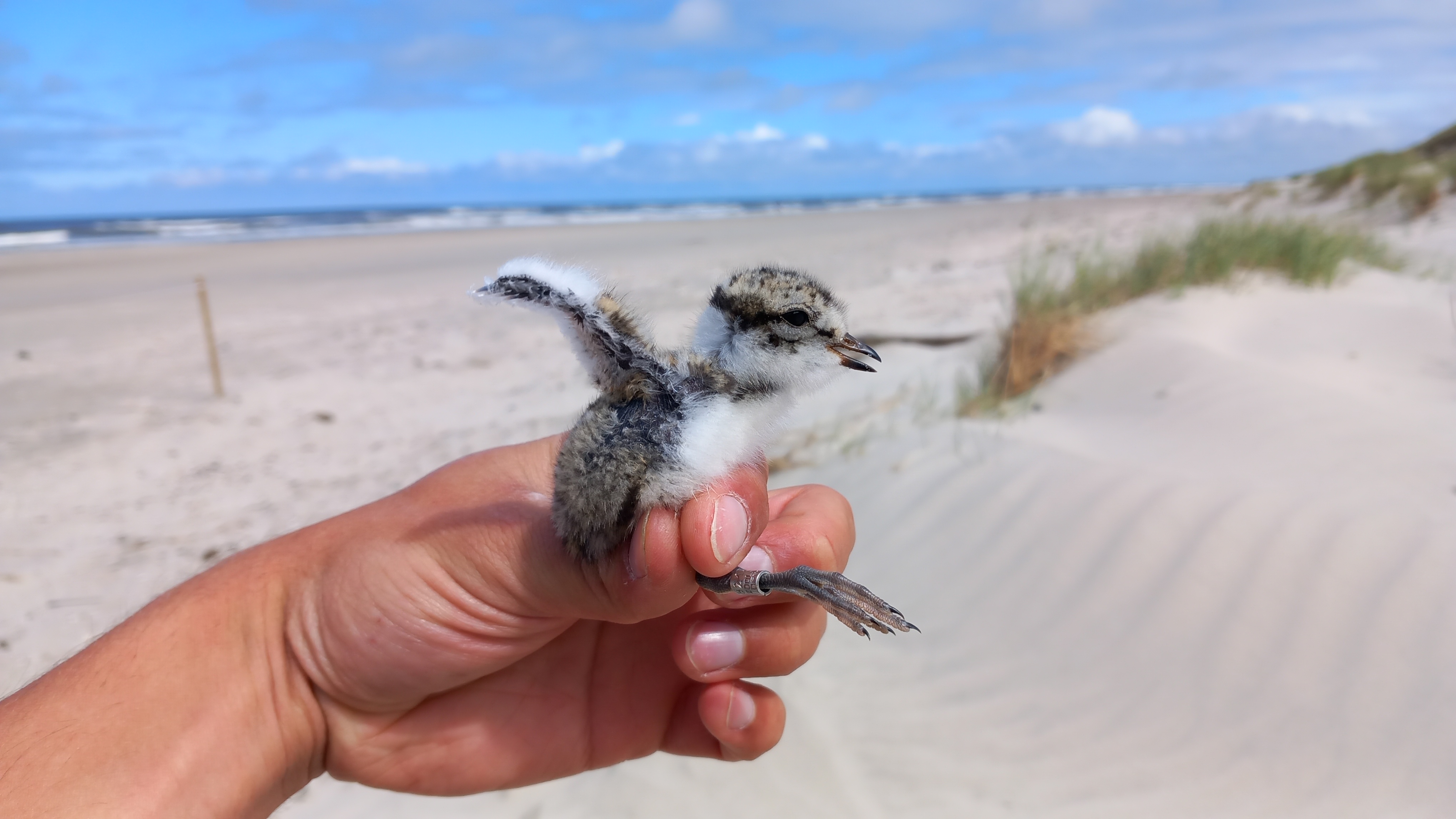
After the walk over the beach, I discovered the first scarce chaser of Blåvand. Unfortunately, I didn't have a my camera with me and when I came back with my camera, I couldn't find it anymore.
An early start of the day, but a late start ringing
With the weather prediction of strong winds this morning I woke up knowing that the possibility of opening the nets was slim. And to no surprise this was correct. It was surprising however that Michael was already out in the dunes searching for birds to ring. And he had some success! Ringing a juvenile Skylark and recapturing one he ringed the 17th of May.
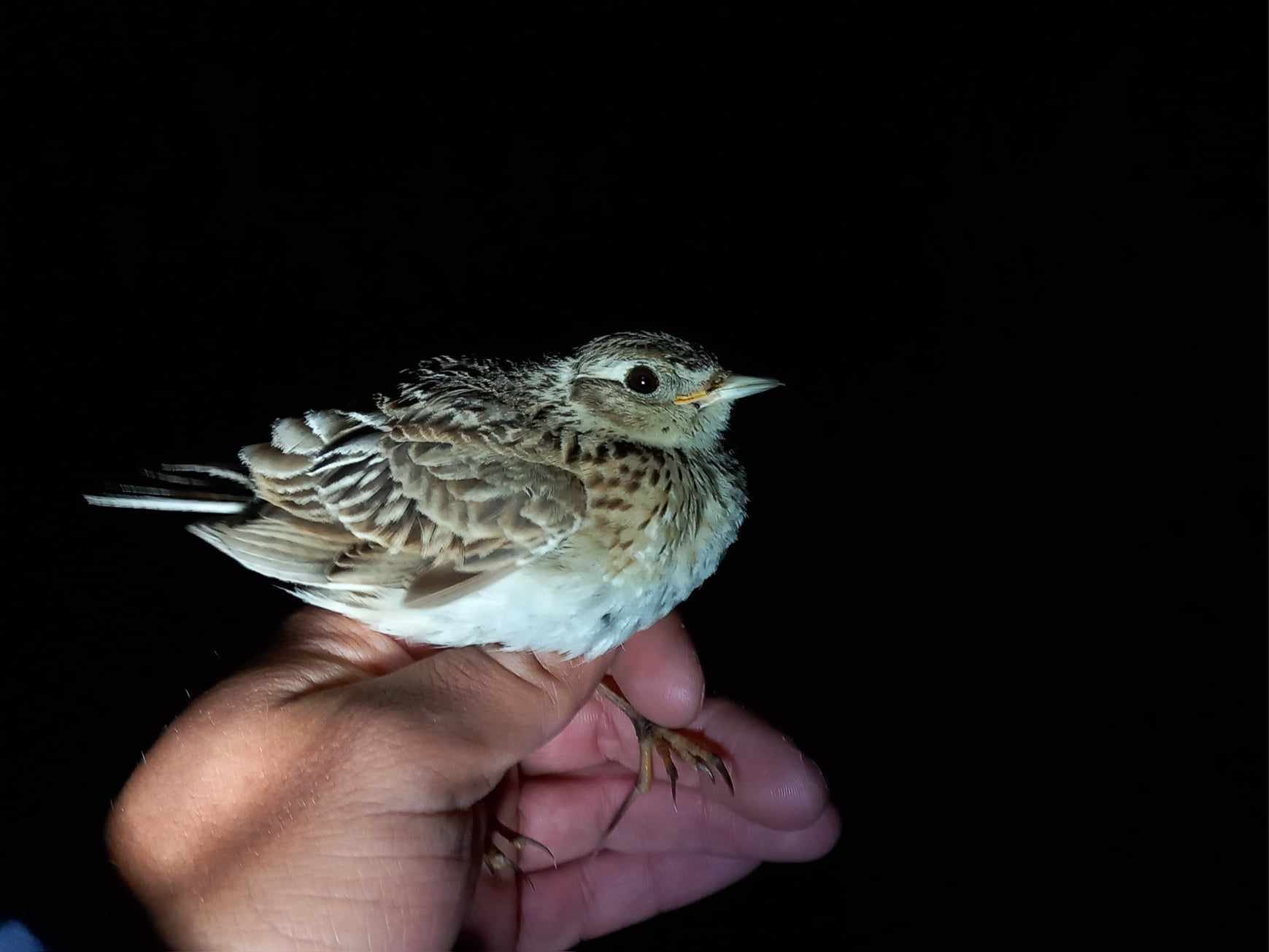
Juvenile Skylark caugth in the early hour of the morning - Note the long toe nails
With no ringing in the morning Michael and I went back to bed to catch up on some sleep. Later in the morning I worked on my project while Michael went back out in the dunes where he heard a Bluethroat singing on the north side of the “lake”. Michael also found a bush where a Shrike pair are supposed to nest, but he had no luck finding the actual nest just yet. In the afternoon Bent came by to see how the two of us were doing before heading out to the coast to check on the fenced off breeding area of the Little terns and Collared plovers.
Later in the afternoon the wind died down a bit and so the nets were opened in both gardens. This resulted in ringing 4 juvenile Great tits and three recaptures.
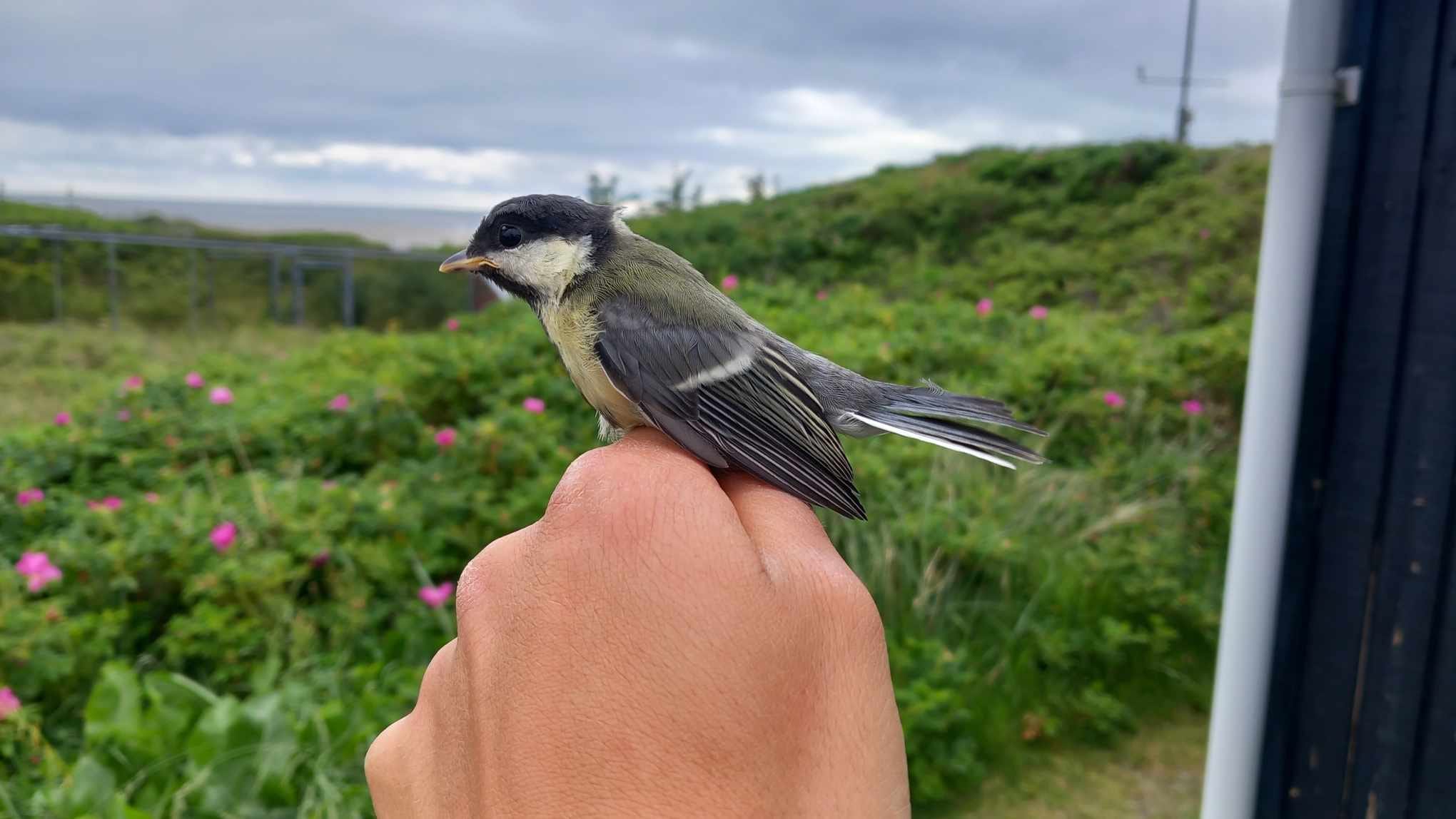
One of the juvenile Great tits of the day
People at the station: Bent, Michael and Maxim
Afsked med foråret
Jeg havde min sidste dag på fuglestationen lørdag, hvor jeg blev afhentet midt på eftermiddagen,men
holder nu kontakten med den hollandske M&M duo og lovede, at skrive søndagens blog som min sidste opgave.
Jeg gik nu ikke glip af meget ved at værre taget hjem.
Foråret og trækket af fugle har virkelig sluppet speederen de seneste uger, så det nu virker til, at det kun er sommerens faste ynglefugle, der er i området.
Vi skal lige et par uger længere ind i sommermånederne før returtrækket af vadefugle kommer i gang og sætter kulør på tilværelsen ved Blåvand fuglestation.
Maxim og Michael havde nogle net åbne i morgentimerne, men var presset af for meget vind til at kunne arbejde med alle net.
Deres forsøg på fangst og ringmærkning af nogle fugle slog da også fejl – de fangede ikke en eneste fugl i de timer, hvor de havde net oppe!
De tog dog lidt revanche senere på dagen, hvor de fik ringmærket et kuld Gransanger unger fra en rede i Fyrhaven og 3 unger af Stor Præstekrave på stranden.
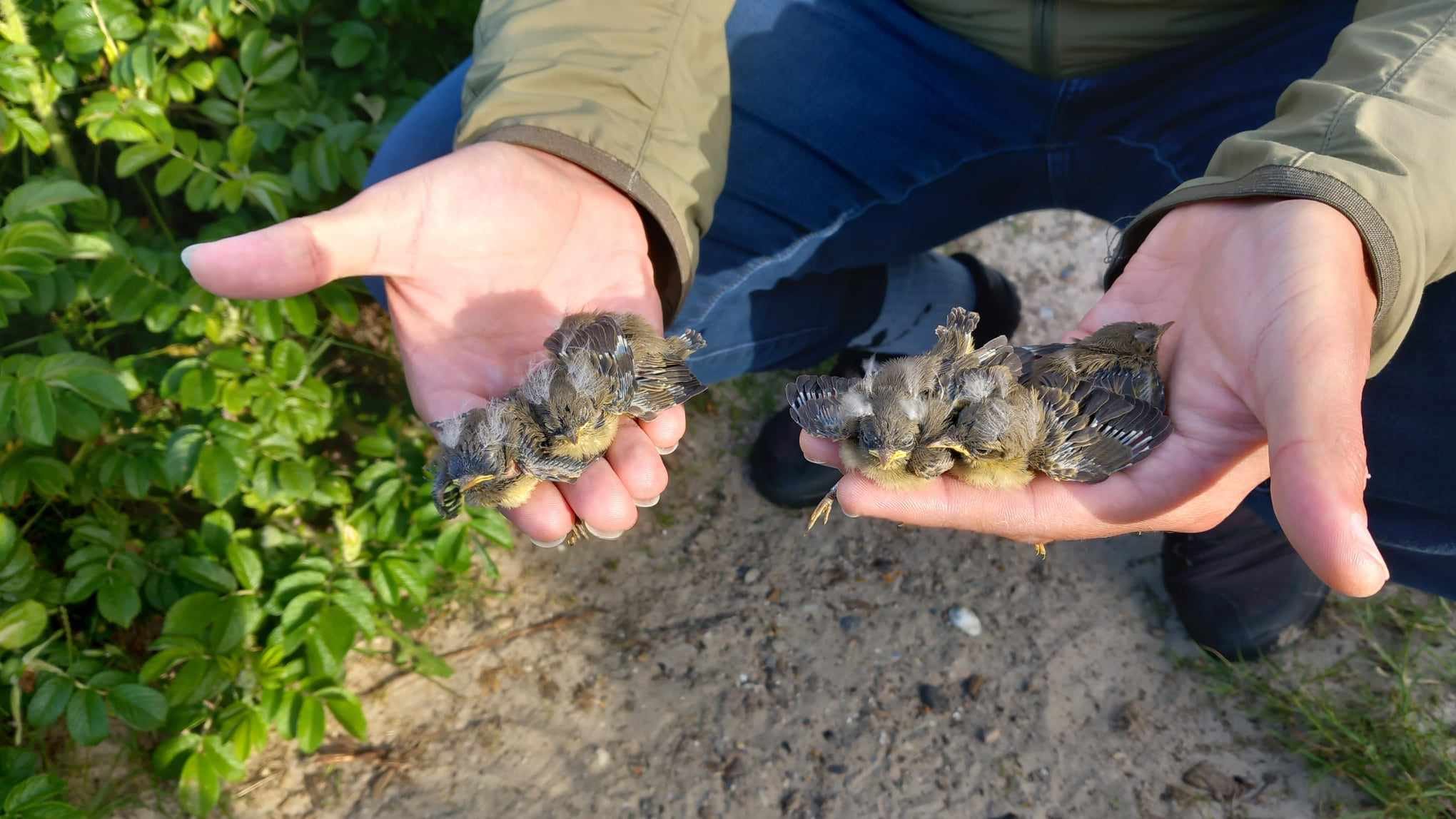
Ellers vil jeg blot benytte mine sidste linjer af bloggen til at sige tusinde tak til alle involverede ved Blåvand Fuglestation for, at give mig muligheden til at hjælpe med ringmærkningen endnu et forår.
Det giver altid en masse spændende oplevelser i naturen herude og møde med søde mennesker på fuglestationen.
Både de faste folk i gruppen omkring Blåvand fuglestation, de besøgende gennem foråret af både enkelt personer og grupperne af weekend møder blandt DKU, SU og Club300.
Ekstra tak går til Maxim, Michael, Bianca, James, Lisa, Jimmy, Freya, Lucas og Mallory, der har holdt mig ud i kortere eller længere tid som ringmærkningsinstruktør og bofælle.
De har alle været søde og taget hensyn til den mærkelige gamle mand i flokken af unge naturentusiaster ????
Nu venter jeg spændt på at se, hvad Maxim og Michael disker op med de næste 2 uger – udgangs effekten og det, at jeg er taget hjem lidt før tid pga mit udfordrede helbred, burde give garanti for en SU art eller 2 i nettene!
Held og lykke til M&M resten af sæsonen!
Just the 2 of us
The morning began slow. It was better than a few days back, when we had just a few birds,but it was still really slow. for the first few hours Lucas and Mallory where still here to support us, but after a few hours, they left the Blåvand fuglestation. Hopefully they had a good time here, but it is time for their next adventure;)
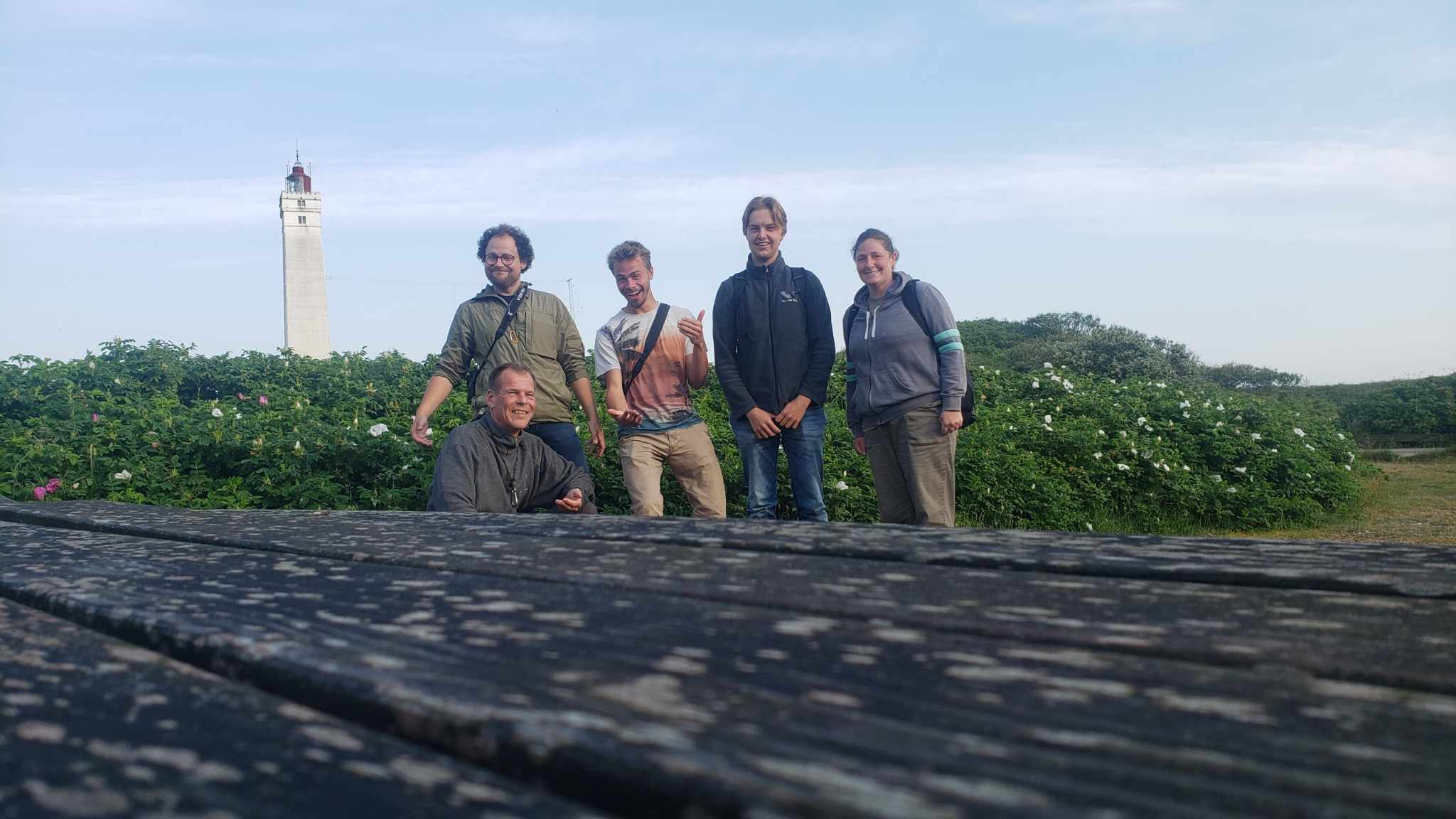
The most mentionable we caught was a newborn great tit. They are incredibly cute and another advantage of the young ones, they don't bite that hard. The ringed parents know the nets very well, they are both ringed of course, and managed to avoid the nets while alarming.
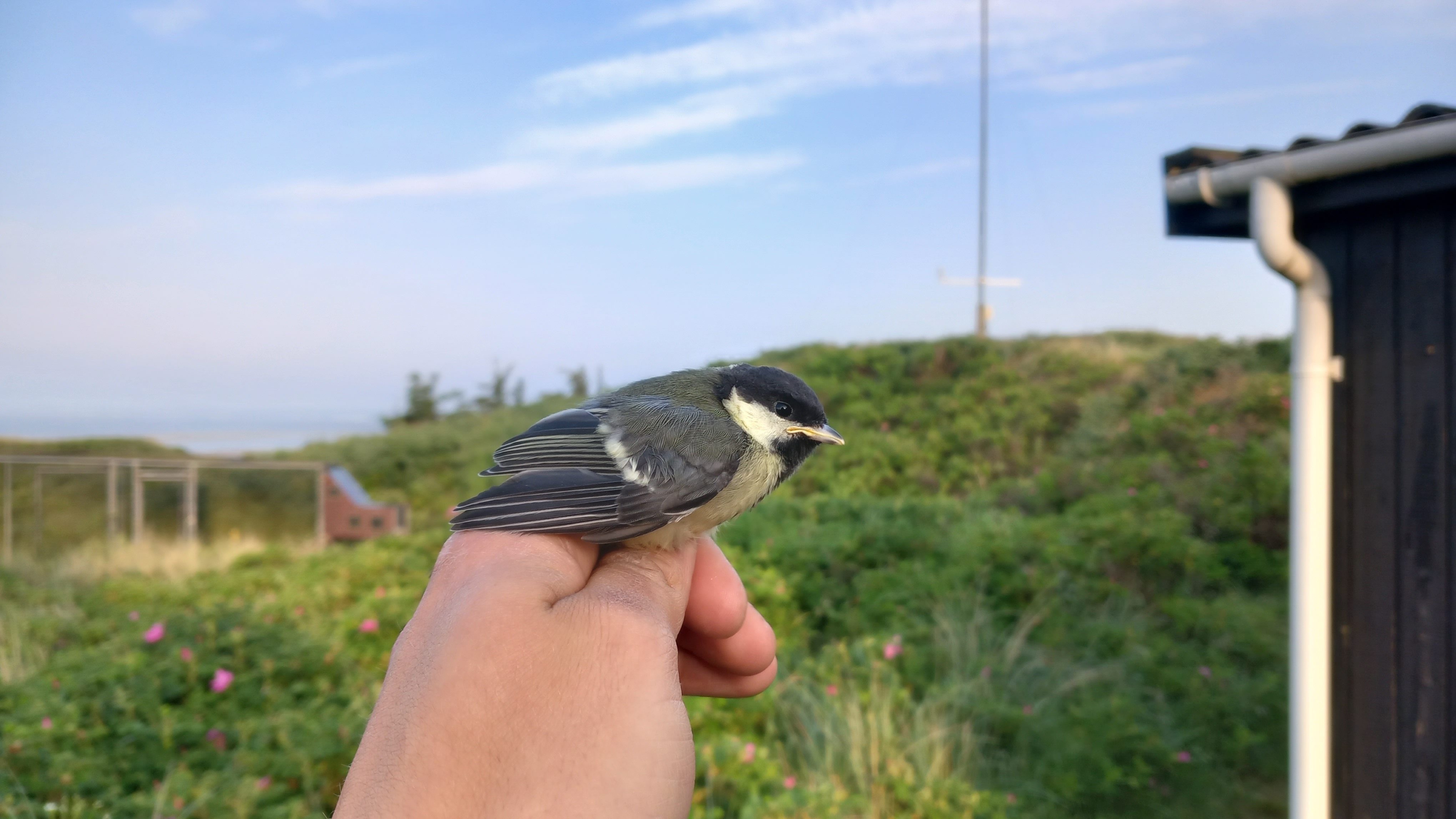
While ringing Morten heard a bee-eeter fly by, but before we could see it, it was already gone. In the meanwhile, I also noticed a chiffchaff (ringed of course) carrying food, and that could mean only 1 thing, it has a nest with youngs nearby. after roughly half an hour, I managed to find the well hidden nest with youngs.
At the end of the afternoon, Morten also left, so the station is now in hands of the dutchies...
Ringing between Gaps of Rainfall and the Opening of the Lighthouse Exhibitions
Today was another day with rain in the morning and so, the nets did not open until later in the day. Of course, we want to be able to have the nets open for as long as possible each day, but the positive side of rain in the morning is that we do not have to get out of bed at 4 o’clock in the morning and we can sleep in a little bit. After weeks of early mornings I won't complain about this!
Between the rainfall of the morning and afternoon, Morten opened the nets in the station garden and managed to ring 8 birds and 1 recapture. The lighthouse nets did not open today, but for a good reason! Today the renovations of the lighthouse keeper’s residence has officially been finished and so two new exhibitions have opened. To celebrate, an opening party was organized.
The two new exhibitions are an updated version of the visitor center "Horns Rev Wind Farm Visitor Center" and a newly built "gate" to the Wadden Sea National Park. The gate is part of the national park's "Welcome to Wadden Sea National Park" project.
Last night after dinner, Henrik and Lucas went for a walk in the area and to all our surprice they spotted a wolf! After all the talks about the animal being in the area it is very exciting to some actual footage from an individual!
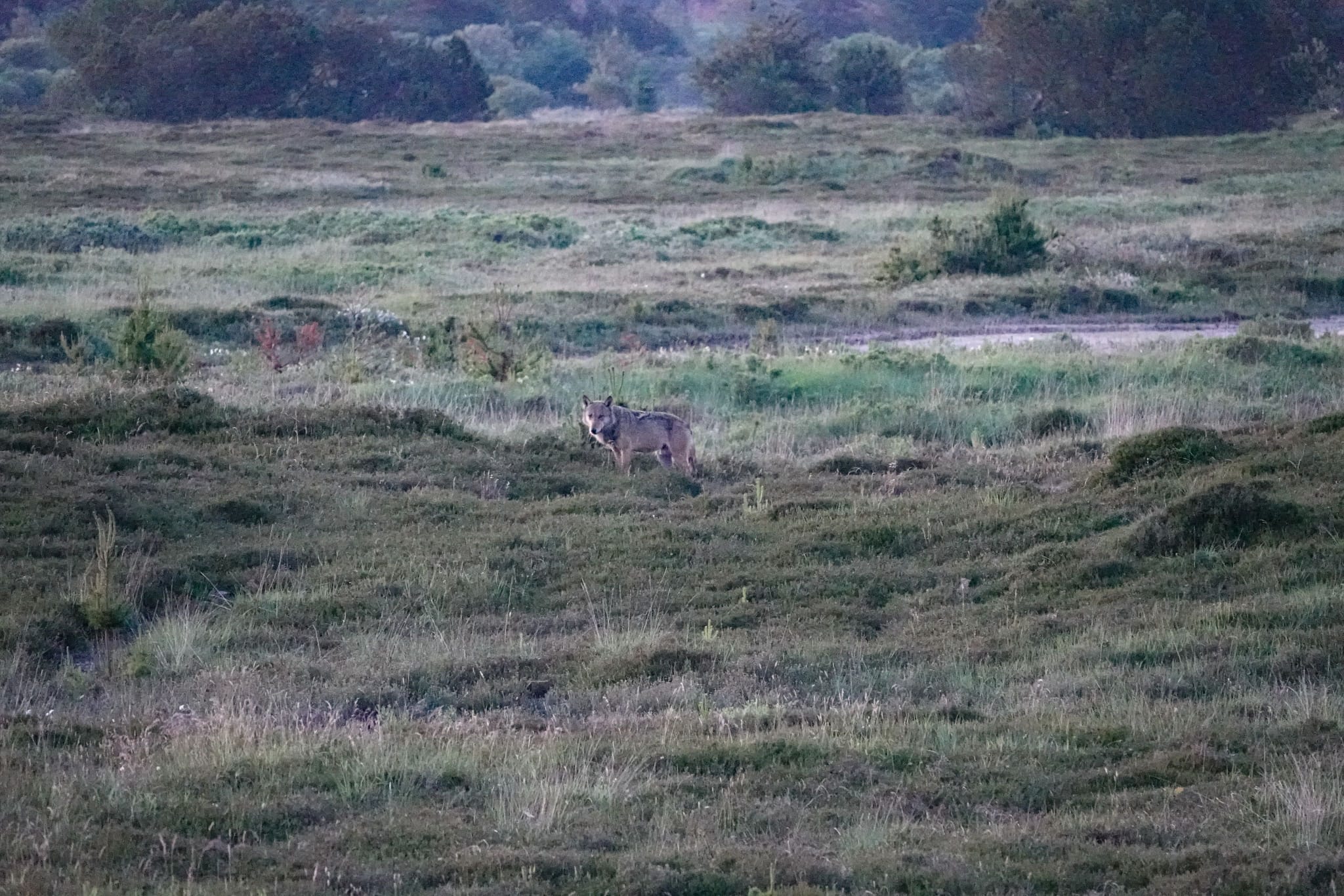
The wolf Henrik and Lucas found lastnight.
Tonight, we shared one last dinner with the five of us together. Tomorrow Lucas, Mallory and Morten will all three leave for home. Micheal and I will hold down the fort untill the new volunteer arive in a few weeks. It was a pleasure to get to know each and every one of them and I wish them the best!
Since Mallory won’t post another blog before leaving the station, Mallory wanted to share goobye present of a picture of a “big” rainworm she was very excited to find after dinner (for scale: foot size = 41).
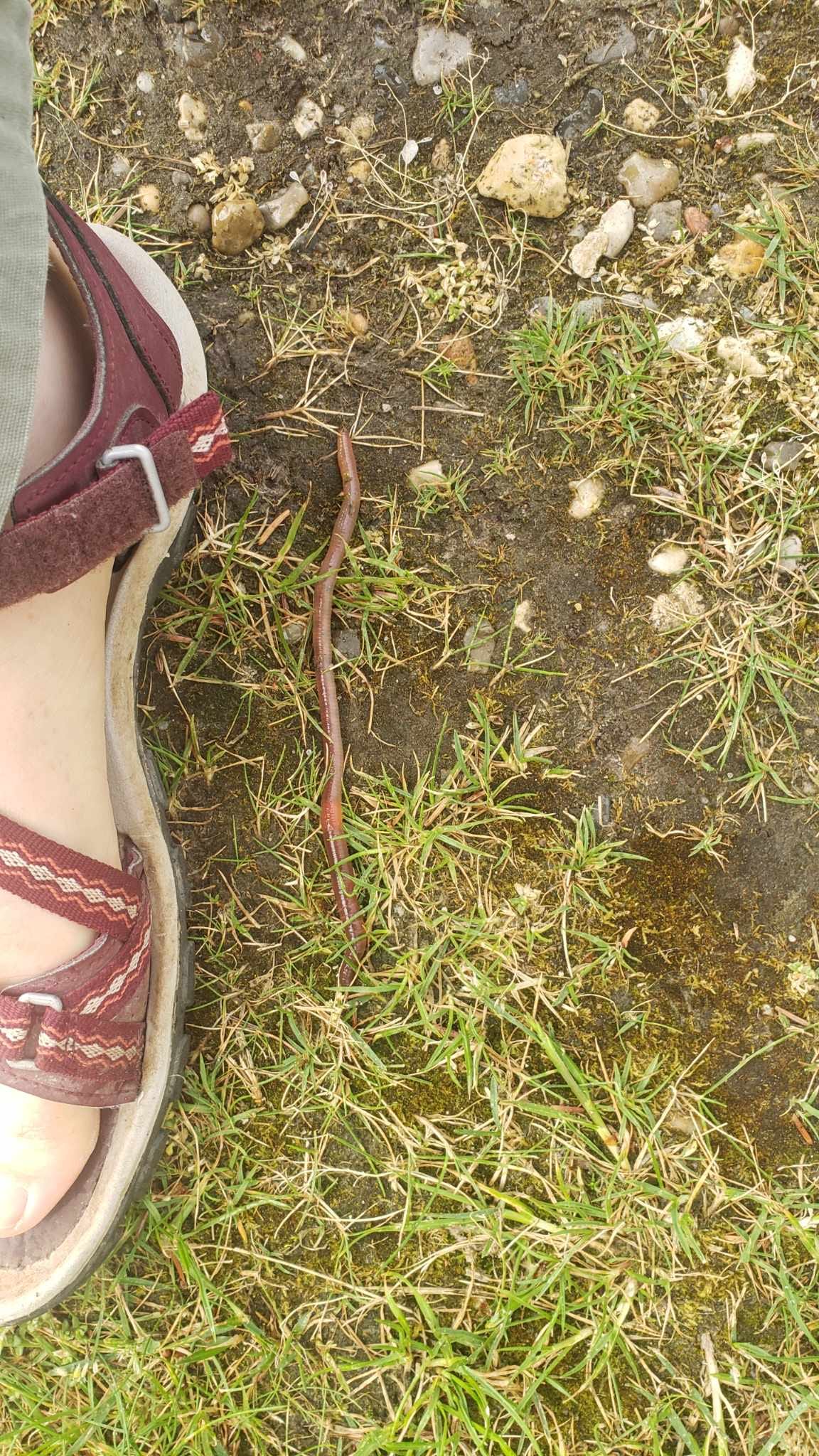
People at the station: Lucas, Mallory, Michael, Morten and Maxim
ringing or reading rings?..
With birdbanding, this was the worst day I've had until now. At the station garden we had 2 new birds and 1 recapture, with the best catch a collared dove, and 1 new icterine warbler at the lighthouse garden. During the ringing, we went out a lot looking for birds, and in special the turtle dove that has been hanging around for the last few days in the area. I finally got to see it too and managed to take some photo's of it as well.
After the ringing I went out for reading some rings of the gulls/terns. unfortunately, when I arrived at the gulls and terns, there where some people who disturbed the group of birds which I was photographing and unfortunately I wasn't able to read all the rings that where there. I managed to get one sandwich tern with a colour ring (G-3C9), and it turned out to be a bird ringed in north Ireland.
I also got the life history of one of the caspian gulls back, and it was ringed in Berlin in June 2022. In the warm afternoon I photographed some of the house martins that are gathering mud for their nests at the parking lot, and after that I tried reading some tree sparrow rings. Eventually I managed to read 2 rings of which one I haven't seen before, ringed in 2022 by a formal Dutch intern, Menno.
We had a good closure of the day with Henrik taking us out for diner in Blåvand, it was good food and most importantly, very fun!
